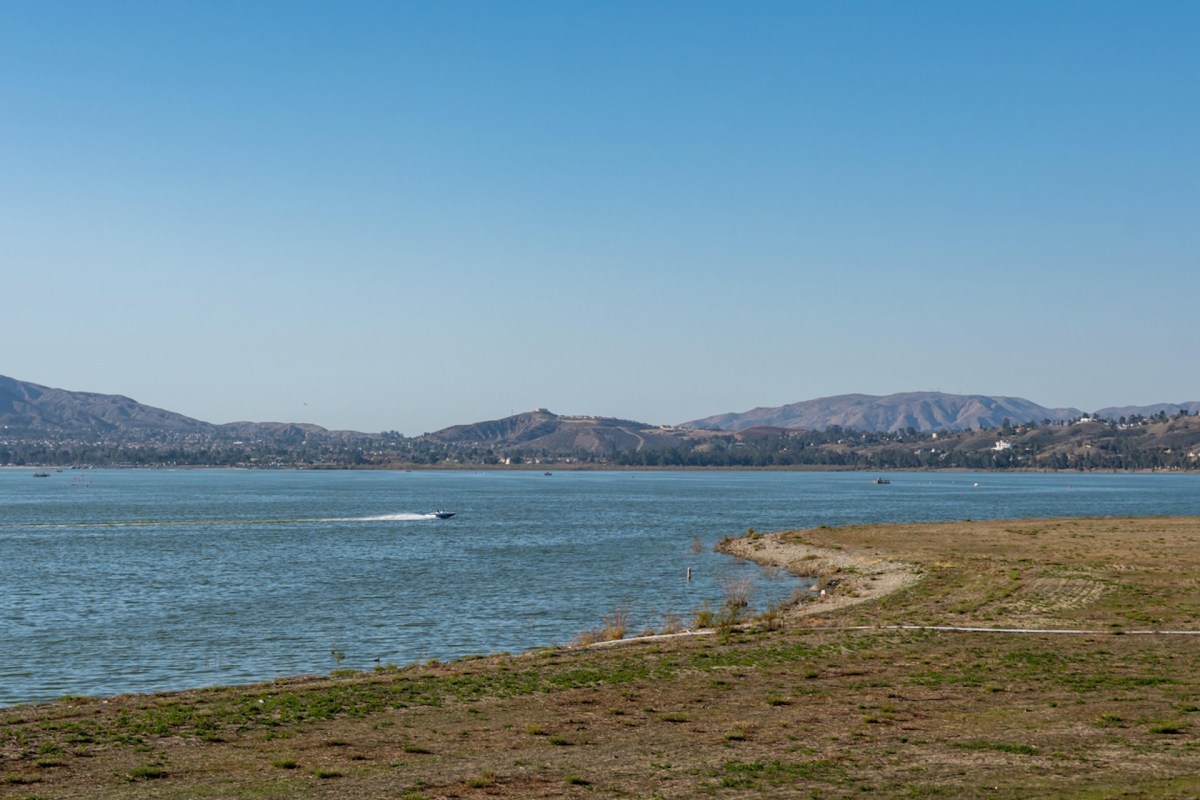Recent heavy rains in Southern California pushed Lake Elsinore water levels to record highs.
As KTLA reported in February, the surge, which raised the lake level to its highest mark in at least a decade, has prompted hopes of increased tourism but also concerns about flooding. Newsweek said atmospheric rivers were the source of the rain and that snowmelt drives the lake level.
The state had been in a prolonged drought, but the lake level, as of April 22, is just shy of 1,250 feet.
The Los Angeles Times reported that officials were prepared to divert excess water to the Santa Ana River to prevent flooding — with public areas already underwater — and business owners are anticipating a big summer, with the season having opened on April 14.
In 2022, a toxic algae bloom closed the lake for six months, according to KTLA, and the business community welcomes visitation.
"When the lake is thriving, the economy is thriving," Lake Elsinore spokesman Jovanny Huerta told the Los Angeles Times.
Watch now: The most sustainable thing about the new Rivian? Its price tag
The 3,000-acre lake, located 60 miles southeast of Los Angeles, is the largest natural freshwater lake in Southern California. It approached its overflow mark of 1,255 feet above sea level in 2005, as the San Diego Union-Tribune reported.
Higher levels improve water quality and help balance the ecosystem, helping distribute oxygen, according to the San Diego news outlet.
But this year's levels have also meant that launches, walkways, and even a public beach went underwater.
David Bertoldo, a Lake Elsinore resident who frequents the lake, "has noticed the dramatic changes," KTLA reported.
"It's changed all the fishing spots, so everyone has to go find their new fishing spots," he told the news outlet.
Lake Elsinore has dried up multiple times in the last century, and other lakes in the region have had water-level problems, from Lake Mead to Lake Powell, creating worries about energy production and water scarcity.
On the other hand, the same atmospheric rivers that filled the lake caused flooding and landslides in the L.A. Basin.
Such extreme weather events and their associated problems are only becoming more common and more intense as the planet warms because of human-produced gases. Higher temperatures mean more water gets held in the atmosphere, which can cause droughts but can also cause more severe storms and flooding. This "new normal" is ultimately less predictable than the status quo has been across recent centuries.
To address the problem, we can make changes to rely on clean sources of energy such as solar and wind instead of dirty coal and gas, hold companies that don't practice sustainability accountable, and vote for political candidates who practice environmentalism.
Join our free newsletter for cool news and cool tips that make it easy to help yourself while helping the planet.









